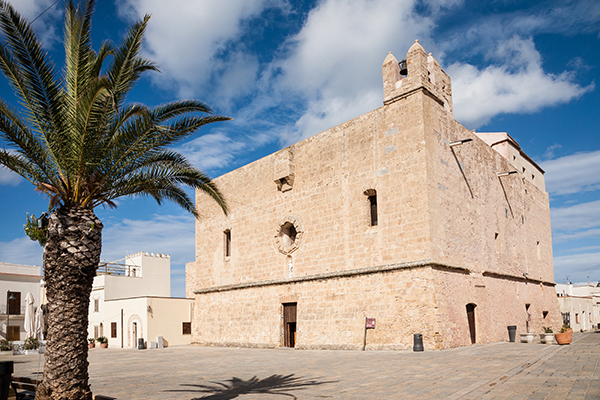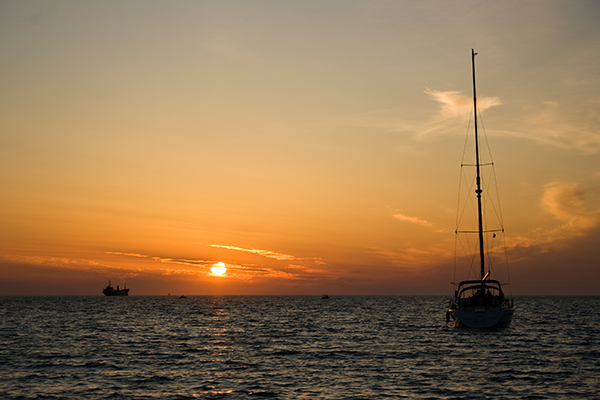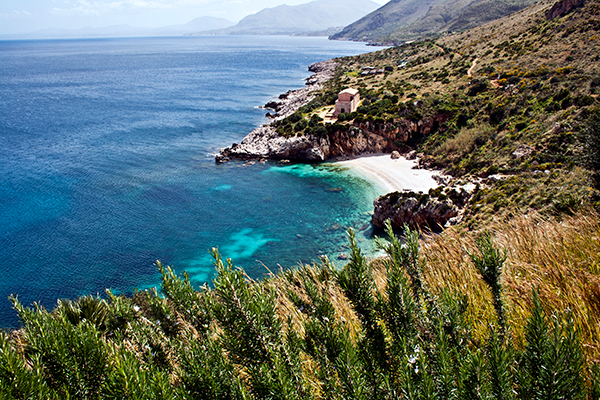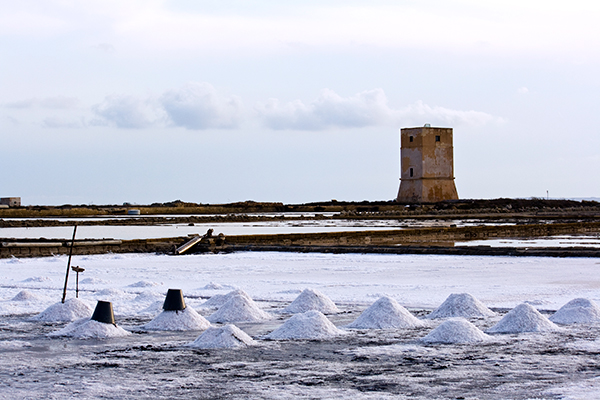Territory
San Vito Lo Capo and surroundings
San Vito Lo Capo is a place of clear tourist vocation, a welcoming place, where you can forget your thoughts. A relaxing place that offers the opportunity to enjoy many cultural and natural attractions.
From relaxing on the beach to boat trips, from trekking in the reserves to trips to nearby archaeological sites, and then diving in the beautiful seabed and visiting its monuments.
And again, how can we forget the scents of its cuisine and the colors of the alleys embroidered with bougainvillea?
San Vito Lo Capo is a place of arrival and rest, but also a good starting point for the discovery of the most important tourist resorts of the Provinces of Trapani and Palermo (even Agrigento!).
The sanctuary, the square and the historic centre
The name of San Vito is linked to this territory from the fifth century, when the young Vito probably suffered martyrdom. The Christians of western Sicily frequented this place with continuous pilgrimages on land and sea and kept alive the memory of the martyr with a small shrine.
The Sanctuary was fortified from the fall of Constantinople in the hands of the Turks (in the middle of the fifteenth century), to defend it from continuous acts of piracy and ensure the salvation of pilgrims. Today it has an impressive religious-military structure that overlooks the splendid square.
Piazza Santuario (Sanctuary Square) is the nerve centre of San Vito Lo Capo from which the main artery branches off, Via Savoia and many characteristic alleys.
Walking in the center of San Vito Lo Capo is always a pleasure: stop for a good ice cream, buy local products or handicrafts or have fun in one of the many small boutiques.
During the year, many events enliven the Piazza, the promenade, Palazzo La Porta, the Town Hall and Piazza Marinella, another lively meeting place for tourists and citizens.


La Tonnara del Secco
In the tuna-fishing area the social and economic life of many Sicilian cities, including San Vito LO Capo, has been built. The Tonnara del Secco dates back to the fourth century before Christ, and first it was used by the Carthaginians.
Since 1969 it is in disuse, but even today, next to the buildings of the tonnara, you can admire the remains of ancient fish processing plants, which date back to the fourth century before Christ.
We recommend a bike ride at sunset or a dip in the clean blue waters.
The watch towers and the Torrazzo
The towers, dating back to the sixteenth century, were built for military purposes of sighting and signaling the dangers coming from the sea.
Between Monte Cofano, San Vito lo Capo and on the other side up to the Zingaro Reserve there are several towers and some of these you can still appreciate the ancient structure still intact: Torre Isulidda, Torre dell’Uzzo, near the homonymous cave and, next, the tower of l’Impisu (or ‘mpisu, hanged) and the tower Du’ Sceri. The towers all have the same structure with a square base, with few internal divisions and a large tank for collecting rainwater.
The “Old Tower”, commonly called “Torrazzo”, was built at the end of the 1300s, also in charge of defending the territory, but has a characteristic cylindrical shape and is placed in a position slightly back from the beach, behind the port of San Vito Lo Capo.
The Falesie and prehistoric caves
San Vito Lo Capo is surrounded by extraordinary red-orange cliffs of rare beauty that have enchanted climbers all over the world over the years.
El Bahira, Torre del Tuono, Roccia delle Favole, Salinella, are just some of the rocky reliefs that present themselves to the viewer as unique and spectacular.
In the coastal cliffs it is possible to appreciate some karst caves, which attest to the human presence in this territory since the 10th century a. C .. Remains of underground tombs, found between the town and the trap, suggest that a human presence was present also later.
Sport and nature enthusiasts can now enjoy the trails that are beaten along the coast near San Vito Lo Capo, and admire the majestic “Grotta dell’Uzzo” and “Grotta del Cavallo”, currently more accessible than others.
The Bay of Cofano and Castelluzzo
The area of the Castelluzzo is called “The Valley of Olives” given the extensive plantations of olive trees that surround the urban area, which make the country a must for nature tourism and lovers of hiking and horseback riding.
Downstream of Castelluzzo, with the Oriented Natural Reserve of Monte Cofano on one side and the Santa Crescenza plateau on the other, the majestic Baia di Cofano and Castelluzzo opens up, with Cala dell’Arena beach (today Baia Santa Margherita ) and the many white pebbles coves that reach the “Borgo dei Pescatori” at the foot of Mount Cofano.
In the area, not to be missed, isulidda, cala in Bue Marino, small gravel coves, one more enchanting than the other.


Reserve of Zingaro
The coast of Zingaro is one of the few Sicilian coastal stretches not contaminated by the presence of a coastal road. The Zingaro Reserve has two entrances, one from San Vito Lo Capo and one from Scopello.
In 1976 a human chain blocked the beginning of the works of a super road, giving life, a few years later, to the first Sicilian Natural Reserve.
Today the path immersed in the Mediterranean scrub alternates paths that reach up to the beautiful gravel coves. An enchanted place where you can also discover the customs and traditions of shepherds and craftsmen who once inhabited the area.
Trapani
The city of Trapani stands on a narrow peninsula shaped like a sickle bathed by two seas.
The legend makes of Trapani the background scenario of the deeds of the goddess of the Harts Ceres, abandoned in this place to go looking for her daughter Proserpina.
It was originally a village of the Sicans (Drépanon from the Greeks) and later a place of great domination for its strategic position: Romans, Arabs, Normans, Aragonese and Bourbons.
Today it boasts a precious historical center in which to find courtyards, historic buildings, churches and splendid walks on the sea dominated by the beautiful domes.
The “SALINE” of TRAPANI
Pink brushstrokes and heaps of shining white. The salt pans of Trapani, along the coastal road that leads from Trapani to Marsala, can be summarized in these two colors.
But there are the mills, the streets of the salt marshes, the enchanting pink flamingos and breathtaking sunsets that you have to see them to believe it.

Segesta
A place where time has stopped.
At Segesta you can still admire the Doric Temple dating back to the 5th century BC and the Theater partially excavated in the rock (II century a.C.), both dating back to the time of the ancient city founded by the Elimi and destroyed in 306 BC. by the Carthaginians.
Erice
Erice is a beautiful medieval village that still preserves its old structure, paved streets and stone houses. Many churches, the characteristic flowered courtyards, the splendid Castle and the breathtaking panormans make Erice an unmissable stop in the territory.
The Cordici Museum houses an important archaeological find discovered in an ericina necropolis: a Head of Aphrodite dating back to the IV century BC. . The Chiesa Matrice, a building dating back to the year 300 and the Castello di Venere (XII-XIII century) are of considerable architectural interest.
Walking through the alleys colored by ceramics and carpets, let yourself be inebriated by the scent of typical sweets, the Genoese, and let yourself be enchanted by the preciousness of almond pastries.
Palermo e Agrigento
Palermo is just over an hour from San Vito Lo Capo, but it is an unmissable stop for those who want to immerse themselves in a past full of riches, dominations, baroque, art and culture.
Palermo is truly extraordinary with its Cathedral, the Palatine Chapel, the Cupolas, its squares.
To get to Agrigento the road is a bit longer, but once you get there, to the Valley of the Temples, you will end up in a Park, about 1300 hectares wide, one of the largest archaeological complexes in the Mediterranean.
It preserves an extraordinary monumental and landscape heritage that includes the remains of the ancient city of Akragas and the territory surrounding it to the sea.

© 2025 - POSEIDON RESIDENCE - tutti i diritti riservati - LA NORIA srl P.IVA 00564980811
CIR 19081020A600329 - CIN IT081020A1SDD6XFM5
© Copyright 2016 nicdark.com
Wonderful Theme

